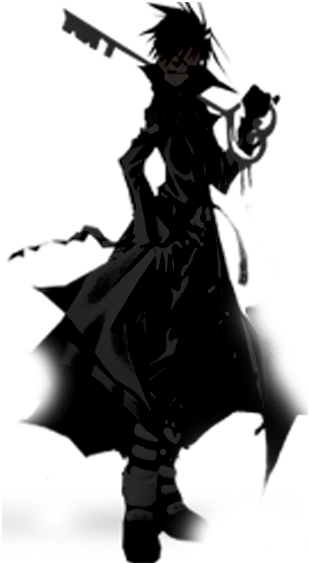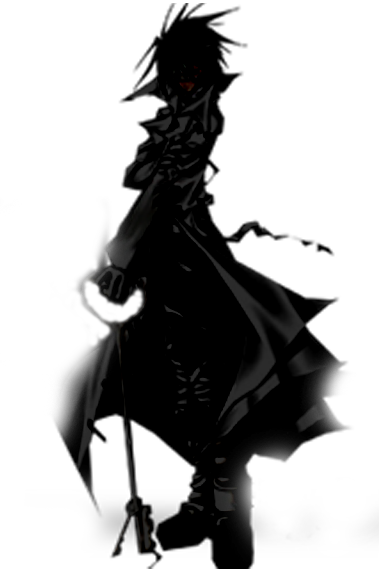Had to post it here because I couldn't post it in the game review section.
FULL credit goes to Silver_fox over at the darkmatters.org website(the unoffical sacred website) for translating it.
Link to article- http://darkmatters.org/forums/index....play-features/
The official Russian Sacred fan-site (located at http://allsacred.ru) published a preview of Sacred 3, which one of their authors wrote after playing the press-release version of the game. This site is affiliated with the Russian publishers for the Sacred game series, so it looks believable that they already laid their hands on the press-release.
I haven't yet seen any English article describing the gameplay features, so I'll tell you what the Russian one is about - at least it'll give you some info to discuss before the reviews from the English sources appear. The original Russian article is located here: http://allsacred.ru/...ticle&artid=640 There is also another Russian preview for Sacred 3 press-release, located here: http://www.rpgarea.r...v-deystvii.html This one has less in-depth info and more personal opinions, but I added some facts from it that are not present in the first article.
Both reviewer's opinions confirm our suspicions that Sacred 3 is a game of a pretty different genre than the first two. It is described as a slasher rather that an RPG and the first reviewer went as far as likening the gameplay to "simplified Devil May Cry in the world of Sacred Citadel". The overall opinions are that the game is rather fun and dynamic, so if you have a console with a couple of controllers, a giant TV, several friends and lots of beer, it's not a bad idea to grab it. But if you expect something like Sacred 1 and 2 or at least a half-decent RPG, you'd be disappointed. Also, while the game is fun to play once, you probably won't replay it for the second time due to its rather simple mechanics.
Now a bit about details. I'll try to translate more exactly here, because I know that it's what many of you would be interested to read about.
Combat Arts:
Every character has 2 (two) unique CAs - "light hit" and "heavy hit" ones. Using these abilities requires special energy that can be refilled by gathering orbs that drop from monster and this energy also regenerates with time. Each of these two CAs has its own charge-bar, but the energy regenerates for both at the same time.
Besides these two special class-specific CAs, each character has the following moves:
Normal Hit - a regular hit (equivalent to left mouse click in the first two games) which you would use most often while waiting for the energy for the special ones to regenerate. Hits done in quick succession can be executed as a three-hit combo, which gains special features depending on the character class.
Charged Hit - it isn't used to deal damage, but serves other purposes, like breaking shields, stopping enemies from casting spells, or breaking traps.
Defensive move - a standard roll move, which surprisingly can be used not only to evade hits, but to deal damage and to just move through the location. The movement speed and offensive capabilities of the move were such that the reviewer ended up rolling instead of walking through the locations.
Finishing move - can be used on the enemies that fell to the ground and kills them in one hit.
When the character levels up, he/she can unlock different hits for these categories and exchange the ones the character currently uses for these new versions. And that is pretty much all the characters gain at level up. Each type of hits has development line, albeit a very limited one, but the player is quite limited about which hits can be used at the same time.
Weapon Spirits:
Besides the types of active hits listed above, characters can have a sort of permanent passive buff by using the Weapon Spirits. You have a chance to release a weapon spirit when you defeat enemies, and once released, those companions stay with you. They can comment about the action, though their phrases are rather repetitive, and of course they influence the combat by strengthening or weakening the characters and/or opponents. For example the Dark Elf spirit (!) enhances your Charged Hit but causes hits to drain your own life. The big downside of the Weapon Spirits is that they were designed with party-play in mind and most give benefits to the party but are not so good for the single character.
Equipment and Loot:
Sadly, you can forget about dropping items and full inventory. In fact you won't even have an inventory at all. The loot system is very close to Sacred Citadel - when you kill a boss you have a chance to get a weapon or armor as a reward. And that is all you have of equipment - a weapon slot (fixed kind of weapons for a class) and an armor slot (full armor, no division to chestplate, helmet, amulets and such). Armor drops rarely, can't be customized in looks nor stats, but can slightly improve by "leveling up the item" if you wear it for a long time. Normal, non-boss enemies can drop only gold and orbs of health and energy, but no items. And the bosses are only encountered in the end of each location. And as you have no inventory, the change of equipment is possible only between locations.
Battle System:
The game is a dynamic and well-made slasher, fluid and quite pleasant, but quite simple and not hardcore as far as the slashers go. It's a strongest side of the game - you quickly hit, hack, slash, and throw enemies around. You can also lift an enemy if it's not much bigger than the character and throw it to the ground or to another enemy. At times the slashing changes to special mechanics - you need to turn a lever, or to break the gates, or to hold ground and survive the hordes of enemies running to you. There is nothing original in those mini-games, but they make for a good change of pace.
Level Design:
We all know that S3 won't have the open world, but it was never explicitly said before that it is a corridor game. Well, it is. You go through a series of separate levels and each one of them is a narrow corridor, not really branching and limited by walls, hedges and the main quest that pushes you forward. Between two "big" levels you need to defeat a level boss, each one of them comes with its own introduction - those are done Borderlands-style: with showing the boss close up and writing its name on screen. Sometimes between big levels there is a small arena-like one, where you encounter increased numbers of monsters who drop more gold for you. As you don't use inventory and don't shop, the gold is used to develop your abilities (instead of XP).
Controls:
The press-release can be controlled only by console gamepad, this version simply does not support keyboard. So there is no info about how good or bad keyboard controls are - but you can see how much the devs prioritize the PC controls.
That's it, folks. I just translated all the info that I found in two Russian reviews, so the info might not be exact in some places where the reviewers were not clear enough, but maybe it would paint the general picture for you.
Results 1 to 1 of 1
Thread: Sacred 3 preview (Translated)
-
07-10-2014 #1
Sacred 3 preview (Translated)
Similar Threads
-
[Trainer] Sacred 2
By trainee in forum TrainersReplies: 21Last Post: 08-31-2018, 04:30 PM -
Sacred 2
By shunter6669 in forum Xbox 360 Modding DiscussionReplies: 8Last Post: 04-13-2011, 01:19 AM -
Akatsuki no Amaneka to Aoi Kyojin Translated XD
By McWxXx in forum Xbox 360 General DiscussionReplies: 6Last Post: 03-10-2011, 04:31 AM -
Sacred 2 Help
By xICEMANx117 in forum Xbox 360 Modding DiscussionReplies: 0Last Post: 01-15-2011, 03:54 AM






 Reply With Quote
Reply With Quote




